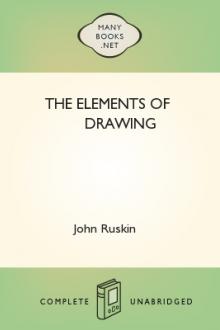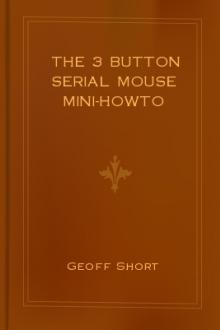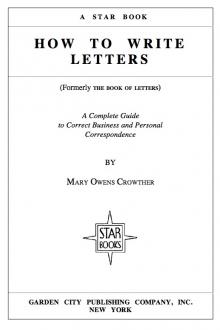The Elements of Drawing by John Ruskin (smart books to read .txt) 📕

- Author: John Ruskin
- Performer: -
Book online «The Elements of Drawing by John Ruskin (smart books to read .txt) 📕». Author John Ruskin
99. Understanding, then, thus much of the use of outline, we will go back to our question about tree-drawing left unanswered at page 48.
Fig. 15. Fig. 15.We were, you remember, in pursuit of mystery among the leaves. Now, it is quite easy to obtain mystery and disorder, to any extent; but the difficulty is to keep organization in the midst of mystery. And you will never succeed in doing this unless you lean always to the definite side, and allow yourself rarely to become quite vague, at least through all your early practice. So, after your single groups of leaves, your first step must be to conditions like Figs. 14 and 15, which are careful facsimiles of two portions of a beautiful wood-cut of Dürer's, the "Flight into Egypt." Copy these carefully,—never mind how little at a time, but thoroughly; then trace the Dürer, and apply it to your drawing, and do not be content till the one fits the other, else your eye is not true enough to carry you safely through meshes of real leaves. And in the course of doing this, you will find that not a line nor dot of Dürer's can be displaced without harm; that all add to the effect, and either express something, or illumine something, or relieve something. If, afterwards, you copy any of the pieces of modern tree drawing, of which so many rich examples are given constantly in our cheap illustrated periodicals (any of the Christmas numbers of last year's Illustrated News or others are full of them), you will see that, though good and forcible general effect is produced, the lines are thrown in by thousands without special intention, and might just as well go one way as another, so only that there be enough of them to produce all together a well-shaped effect of intricacy: and you will find that a little careless scratching about with your pen will bring you very near the same result without an effort; but that no scratching of pen, nor any fortunate chance, nor anything but downright skill and thought, will imitate so much as one leaf of Dürer's. Yet there is considerable intricacy and glittering confusion in the interstices of those vine leaves of his, as well as of the grass.
Fig. 16. Fig. 16.100. When you have got familiarized to his firm manner, you may draw from Nature as much as you like in the same way; and when you are tired of the intense care required for this, you may fall into a little more easy massing of the leaves, as in Fig. 10 (p. 55). This is facsimilëd from an engraving after Titian, but an engraving not quite first-rate in manner, the leaves being a little too formal; still, it is a good enough model for your times of rest; and when you cannot carry the thing even so far as this, you may sketch the forms of the masses, as in Fig. 16,[22] taking care always to have thorough command over your hand; that is, not to let the mass take a free shape because your hand ran glibly over the paper, but because in Nature it has actually a free and noble shape, and you have faithfully followed the same.
101. And now that we have come to questions of noble shape, as well as true shape, and that we are going to draw from Nature at our pleasure, other considerations enter into the business, which are by no means confined to first practice, but extend to all practice; these (as this letter is long enough, I should think, to satisfy even the most exacting of correspondents) I will arrange in a second letter; praying you only to excuse the tiresomeness of this first one—tiresomeness inseparable from directions touching the beginning of any art,—and to believe me, even though I am trying to set you to dull and hard work,
Very faithfully yours,
J. Ruskin.
[1] (N.B.—This note is only for the satisfaction of incredulous or curious readers. You may miss it if you are in a hurry, or are willing to take the statement in the text on trust.)
The perception of solid Form is entirely a matter of experience. We see nothing but flat colors; and it is only by a series of experiments that we find out that a stain of black or gray indicates the dark side of a solid substance, or that a faint hue indicates that the object in which it appears is far away. The whole technical power of painting depends on our recovery of what may be called the innocence of the eye; that is to say, of a sort of childish perception of these flat stains of color, merely as such, without consciousness of what they signify,—as a blind man would see them if suddenly gifted with sight.
For instance: when grass is lighted strongly by the sun in certain directions, it is turned from green into a peculiar and somewhat dusty-looking yellow. If we had been born blind, and were suddenly endowed with sight on a piece of grass thus lighted in some parts by the sun, it would appear to us that part of the grass was green, and part a dusty yellow (very nearly of the color of primroses); and, if there were primroses near, we should think that the sunlighted grass was another mass of plants of the same sulphur-yellow color. We should try to gather some of them, and then find that the color went away from the grass when we stood between it and the sun, but not from the primroses; and by a series of experiments we should find out that the sun was really the cause of the color in the one,—not in the other. We go through such processes of experiment unconsciously in childhood; and having once come to conclusions touching the signification of certain colors, we always suppose that we see what we only know, and have hardly any consciousness of the real aspect of the signs we have learned to interpret. Very few people have any idea that sunlighted grass is yellow.
Now, a highly accomplished artist has always reduced himself as nearly as possible to this condition of infantine sight. He sees the colors of nature exactly as they are, and therefore perceives at once in the sunlighted grass the precise relation between the two colors that form its shade and light. To him it does not seem shade and light, but bluish green barred with gold.
Strive, therefore, first of all, to convince yourself of this great fact about sight. This, in your hand, which you know by experience and touch to be a book, is to your eye nothing but a patch of white, variously gradated and spotted; this other thing near you, which by experience you know to be a table, is to your eye only a patch of brown, variously darkened and veined; and so on: and the whole art of Painting consists merely in perceiving the shape and depth of these patches of color, and putting patches of the same size, depth, and shape on canvas. The only obstacle to the success of painting is, that many of the real colors are brighter and paler than it is possible to put on canvas: we must put darker ones to represent them.
[2] Stale crumb of bread is better, if you are making a delicate drawing, than india-rubber, for it disturbs the surface of the paper less: but it crumbles about the room and makes a mess; and, besides, you waste the good bread, which is wrong; and your drawing will not for a long while be worth the crumbs. So use india-rubber very lightly; or, if heavily, pressing it only, not passing it over the paper, and leave what pencil marks will not come away so, without minding them. In a finished drawing the uneffaced penciling is often serviceable, helping the general tone, and enabling you to take out little bright lights.
[3] What is usually so much sought after under the term "freedom" is the character of the drawing of a great master in a hurry, whose hand is so thoroughly disciplined, that when pressed for time he can let it fly as it will, and it will not go far wrong. But the hand of a great master at real work is never free: its swiftest dash is under perfect government. Paul Veronese or Tintoret could pause within a hair's breadth of any appointed mark, in their fastest touches; and follow, within a hair's breadth, the previously intended curve. You must never, therefore, aim at freedom. It is not required of your drawing that it should be free, but that it should be right; in time you will be able to do right easily, and then your work will be free in the best sense; but there is no merit in doing wrong easily.
These remarks, however, do not apply to the lines used in shading, which, it will be remembered, are to be made as quickly as possible. The reason of this is, that the quicker a





Comments (0)